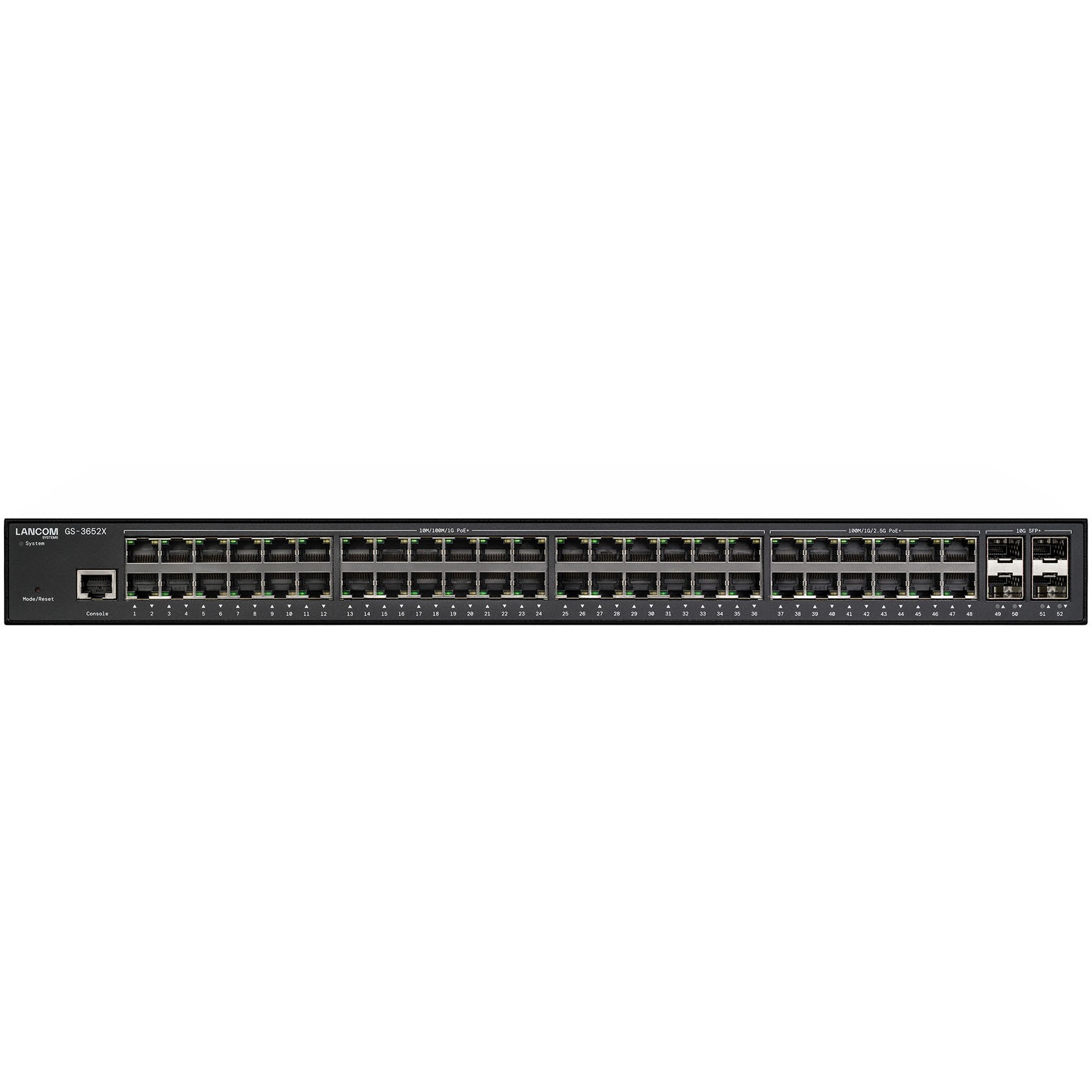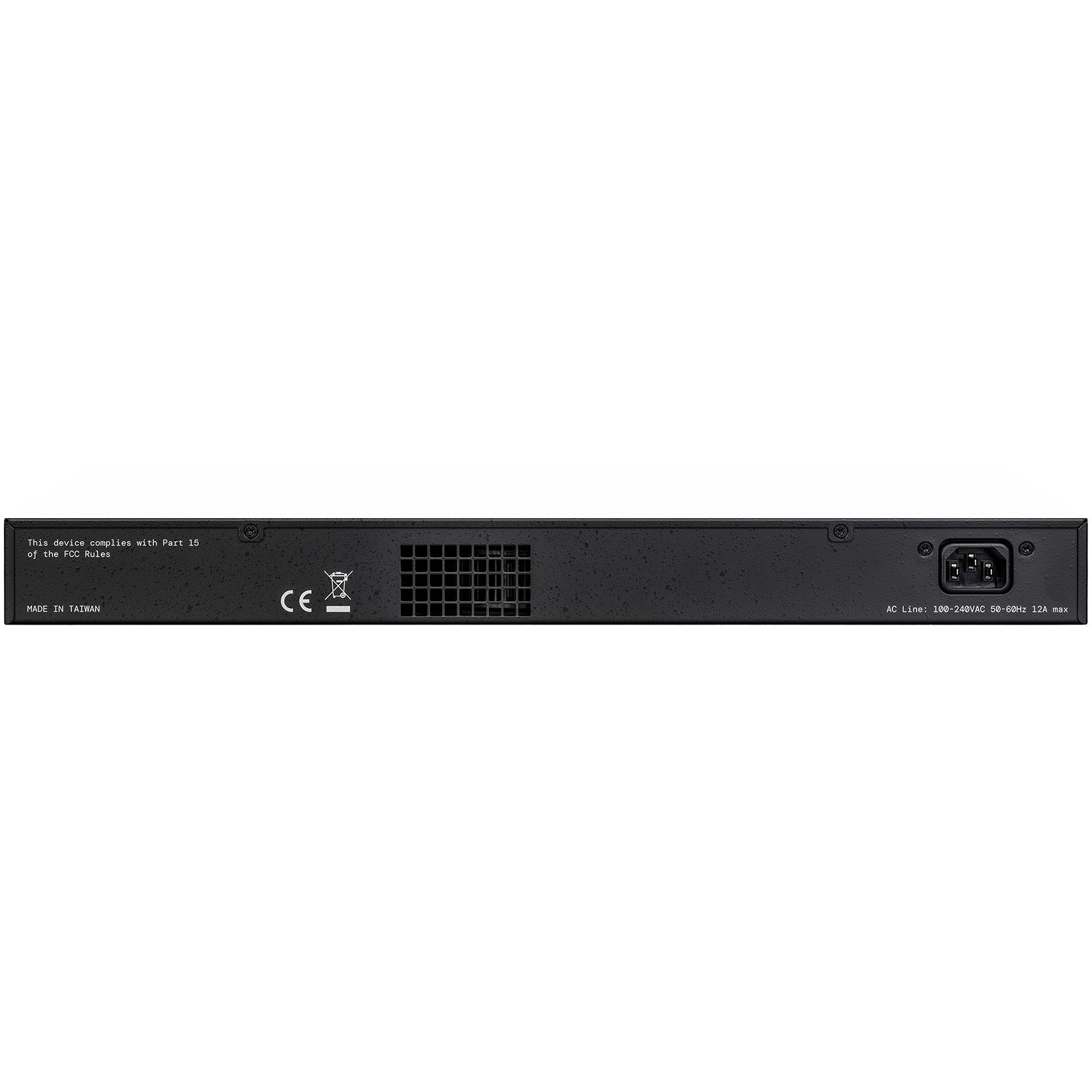48+4P Lancom GS-3652X RM M
€2,348.88
LANCOM GS-3652X, Managed, L3, 2.5G Ethernet (100/1000/2500), rack installation, 1U
39 in stock
Description
LANCOM GS-3652X. Switch type: Managed, Switch level: L3. Basic switching RJ-45 Ethernet ports type: 2.5G Ethernet (100/1000/2500), Number of basic switching RJ-45 Ethernet ports: 48, Console port: RJ-45. MAC address table: 32000 entries, Routing/switching capacity: 212 Gbit/s. Network standards: IEEE 802.1D, IEEE 802.1Q, IEEE 802.1ab, IEEE 802.1ak, IEEE 802.1p, IEEE 802.1s, IEEE 802.1w, IEEE…. Power connector: AC input jack. Rack mounting, form factor: 1U
Multi-Gigabit Access Switch for large networking scenarios
This multi-gigabit access switch is the ideal product wherever a large number of network components are deployed. With 12x 2.5 Gigabit Ethernet ports, it provides the necessary high-performance foundation for operating Wi-Fi 6 access points and other network components with high performance requirements. An additional 36x Gigabit Ethernet ports, 4x SFP+ ports, and basic Layer 3 functions such as static routing and DHCP server make this device a networking pro for large networks.
Highlights
High performance on 52 ports
The LANCOM GS-3652X is equipped with 12 2.5 Gigabit Ethernet and 36 Gigabit Ethernet ports, as well as four SFP+ ports, supporting transmission rates of up to 10 Gbps. With a data throughput of 212 Gbps on the backplane, it offers full performance even under high load. This access switch provides a powerful foundation for large network infrastructures in all industries and application areas.
A high-performance basis for Wi-Fi 6
Thanks to its 12 high-performance 2.5 Gigabit Ethernet ports, the LANCOM GS-3652X is the ideal LAN-side foundation for integrating the Wi-Fi 6 wireless standard into modern infrastructures. The increased data rates required by Wi-Fi 6 require 2.5 Gigabit Ethernet, as the required performance exceeds that of a single Gigabit Ethernet port. This switch enables the operation of up to 12 Wi-Fi 6 access points or other network components with high performance requirements.
Advantages
Static routing for off-peak networks
The LANCOM GS-3652X supports the basic Layer 3 function of static routing, thus shifting certain routing tasks from the router to the switch. Predefining network routes across one or more network segments enables faster data exchange, especially with high internal data volumes, and reduces the load on the router. Freed-up router capacity is then available to handle external data traffic, thus increasing the efficiency of the entire network.
Cloud-managed LAN
The LANCOM GS-3652X offers fast and easy network integration and automatic configuration assignment with the LANCOM Management Cloud. Cloud-managed LAN replaces individual device configuration with holistic network orchestration and enables automatic VLAN assignment to the desired switch ports. This allows all configurations to be rolled out with a click of the mouse, making even more complex networking scenarios easy to manage.
DHCP server functionality
As a DHCP server, the switch is capable of independently and automatically assigning IP addresses to clients. The LANCOM GS-3652X supports this basic Layer 3 function and thus takes over the IP management of the connected network.
Configurable access control
The LANCOM GS-3652X ensures that no unauthorized clients gain access to the network. This is made possible by secure access control on all ports according to IEEE 802.1X (port-based, single-, multi-, and MAC-based).
Secure remote management
Thanks to secure communication protocols such as SSH, SSL, and SNMPv3, the LANCOM GS-3652X enables professional remote network management. Furthermore, the switch supports the TACACS+ protocol for authentication, authorization, and accounting. This is an optimal solution that promises maximum security, especially when managing and monitoring cross-site networks.
IPv6 and IPv4 support
Thanks to its dual-stack implementation, the LANCOM GS-3652X can be deployed in pure IPv4, pure IPv6, or mixed networks. Numerous applications such as SSL, SSH, Telnet, and TFTP can also be run over IPv6 networks. IPv6 features such as stateless autoconfiguration, neighbor discovery, and MLD snooping round out the IPv6 features.


